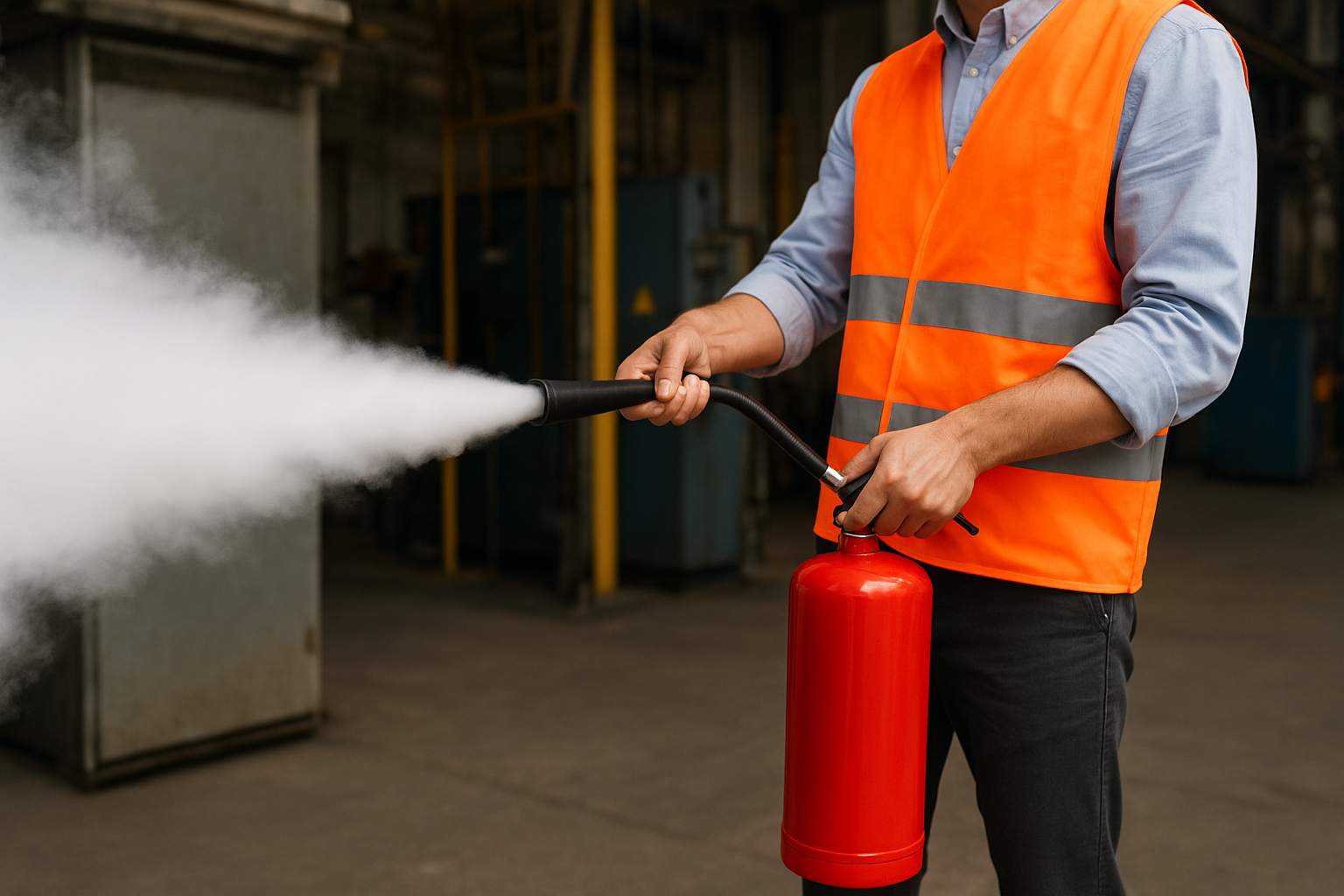Fire safety is a critical consideration for every workplace, but the risks can vary significantly depending on the industry. From manufacturing facilities and hospitality venues to offices and retail environments, each business faces unique fire hazards that require specific strategies for prevention and response. Understanding these risks is the first step to protecting your people, property, and operations. For businesses looking to improve their fire preparedness, working with experts like EBC Group can provide tailored solutions that address industry-specific challenges.
In this article, we’ll explore common fire hazards across key industries and outline what business owners need to know to safeguard their workplaces.
Why Industry-Specific Fire Safety Matters
While general fire risks—such as faulty wiring, overloaded circuits, or human error—can be found in any workplace, the scale and nature of hazards differ across industries. A restaurant kitchen faces very different risks to a warehouse storing flammable chemicals. Recognising these nuances ensures that businesses implement appropriate fire safety measures, comply with regulations, and minimise costly downtime in the event of an emergency.
Fire Hazards in Manufacturing and Industrial Settings
Manufacturing facilities and industrial sites are often considered high-risk environments when it comes to fire safety.
Key hazards include:
- Flammable materials: Factories frequently store chemicals, fuels, or solvents that can ignite quickly.
- Machinery and equipment: Overheated machinery, sparks, or friction from moving parts can trigger fires.
- Dust build-up: Industries like woodworking or textiles can experience dust accumulation, which is highly combustible.
Mitigation strategies:
- Implement strict housekeeping practices to control dust and waste.
- Regularly maintain and inspect equipment to prevent overheating.
- Provide staff with fire safety training, including proper handling of hazardous substances.
- Install fire detection and suppression systems suitable for industrial use.
Fire Risks in Hospitality and Food Service
Cafés, restaurants, hotels, and bars face their own set of hazards, largely related to cooking and customer activity.
Key hazards include:
- Open flames and hot surfaces: Stoves, ovens, grills, and deep fryers are prime fire sources.
- Grease build-up: Grease fires are notoriously difficult to extinguish and can spread quickly.
- Crowded spaces: High occupancy increases evacuation risks during a fire.
Mitigation strategies:
- Clean kitchen exhaust systems and cooking equipment regularly.
- Train staff in how to handle grease fires (e.g., never using water).
- Ensure fire exits are unobstructed and clearly marked.
- Use fire blankets and appropriate extinguishers in all kitchen areas.
Fire Hazards in Office Environments
While offices may seem low risk compared to factories or kitchens, they are not immune to fire threats.
Key hazards include:
- Electrical equipment: Computers, printers, and servers can overheat if poorly maintained.
- Paper and storage materials: Large volumes of paper or files act as fuel for fires.
- Cables and power boards: Overloaded outlets and tangled cords increase risk.
Mitigation strategies:
- Schedule regular electrical inspections.
- Encourage a tidy workspace and safe storage practices.
- Install smoke detectors and sprinklers in key areas.
- Provide fire warden training for staff to manage evacuation procedures.
Fire Risks in Retail and Warehousing
Retail outlets and warehouses deal with varied stock and customer interactions, both of which influence fire safety requirements.
Key hazards include:
- Stockpiled goods: Clothing, cardboard, and packaging are highly combustible.
- Storage of flammable liquids: Cleaning products, paints, or aerosols can ignite if mishandled.
- Public access: Customers in retail spaces may be unaware of evacuation protocols.
Mitigation strategies:
- Implement safe stock storage practices to avoid obstructing exits.
- Store hazardous products in accordance with safety guidelines.
- Conduct regular fire drills to prepare staff for emergencies.
- Ensure fire suppression systems cover large stock areas.
Fire Hazards in Healthcare Facilities
Hospitals, aged care facilities, and clinics present unique challenges due to vulnerable occupants and the critical nature of services provided.
Key hazards include:
- Oxygen and flammable gases: Oxygen-rich environments increase fire intensity.
- Specialist equipment: Medical devices can malfunction or overheat.
- Mobility challenges: Patients may have limited ability to evacuate quickly.
Mitigation strategies:
- Develop detailed evacuation plans that account for patient needs.
- Provide specialised staff training in fire response and patient movement.
- Regularly service and test medical and electrical equipment.
- Use fire-resistant building materials where possible.
Construction and Trades: On-Site Hazards
Construction sites are dynamic environments where fire risks can change daily.
Key hazards include:
- Hot works: Welding, cutting, and grinding can create sparks.
- Temporary electrical setups: Cables and power tools are vulnerable to damage.
- Fuel and chemical storage: Improperly stored fuel or chemicals create ignition risks.
Mitigation strategies:
- Establish a hot works permit system to control fire risks during welding and cutting.
- Secure and inspect temporary wiring and equipment.
- Store flammable liquids in approved containers and away from ignition sources.
- Provide portable extinguishers throughout the site.
Building a Culture of Fire Safety
No matter the industry, the most effective fire safety strategies rely on a strong safety culture. This means encouraging staff to remain vigilant, report hazards, and participate in regular training. When fire safety is treated as an ongoing commitment rather than a one-off checklist, businesses significantly reduce their risks.
Key steps include:
- Conducting regular risk assessments tailored to industry conditions.
- Reviewing and updating fire safety policies as operations evolve.
- Running scheduled fire drills to ensure readiness.
- Partnering with fire safety experts for tailored compliance advice.
Every business faces fire risks, but those risks differ greatly depending on the industry
From grease fires in kitchens to dust explosions in factories, understanding your sector’s specific challenges is essential to effective prevention. By adopting proactive strategies, maintaining equipment, and fostering a culture of fire safety, businesses can protect their staff, customers, and assets.
For tailored fire safety solutions, compliance support, and ongoing risk management, businesses can benefit from the expertise of professionals. With the right guidance, every workplace can build resilience and ensure it is prepared for any emergency.


































